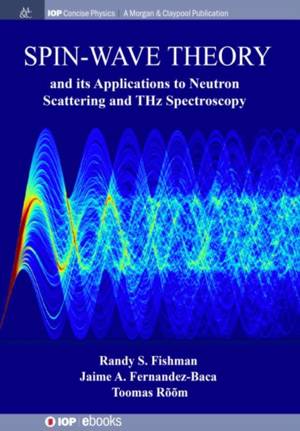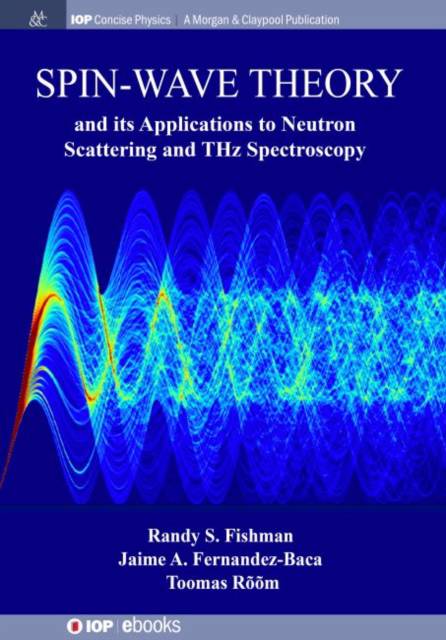
- Retrait gratuit dans votre magasin Club
- 7.000.000 titres dans notre catalogue
- Payer en toute sécurité
- Toujours un magasin près de chez vous
- Retrait gratuit dans votre magasin Club
- 7.000.0000 titres dans notre catalogue
- Payer en toute sécurité
- Toujours un magasin près de chez vous
Spin-Wave Theory and its Applications to Neutron Scattering and THz Spectroscopy
Randy S Fishman, Jaime A Fernandez-Baca, Toomas Rõõm
111,95 €
+ 223 points
Format
Description
Two of the most powerful tools used to study magnetic materials are inelastic neutron scattering and THz spectroscopy. Because the measured spectra provide a dynamical fingerprint of a magnetic material, those tools enable scientists to unravel the structure of complex magnetic states and to determine the microcscopic interactions that produce them. This book discusses the experimental techniques of inleastic neutron scattering and THz spectroscopy and provides the theoretical tools required to analyze their measurements using spin-wave theory. For most materials, this analysis can resolve the microscopic magnetic interactions such as exchange, anisotropy, and Dzyaloshinskii-Moriya interactions. Assuming a background in elementary statistical mechanics and a familiarity with the quantized harmonic oscillator, this book presents a comprehensive review of spin-wave theory and its applications to both inelastic neutron scattering and THz spectroscopy. Spin-wave theory is used to study several model magnetic systems, including non-collinear magnets such as spirals and cycloids that are produced by geometric frustration, competing exchange interactions, or Dzyaloshinskii-Moriya interactions. Several case studies utilizing spin-wave theory to analyze inelastic neutron-scattering and THz spectroscopy measurements are presented. These include both single crystals and powders and both oxides and molecule-based magnets. In addition to sketching the numerical techniques used to fit dynamical spectra based on microscopic models, this book also contains over 70 exercises that can be performed by beginning graduate students.
Spécifications
Parties prenantes
- Auteur(s) :
- Editeur:
Contenu
- Nombre de pages :
- 225
- Langue:
- Anglais
- Collection :
Caractéristiques
- EAN:
- 9781643271118
- Date de parution :
- 05-11-18
- Format:
- Livre broché
- Format numérique:
- Trade paperback (VS)
- Dimensions :
- 178 mm x 254 mm
- Poids :
- 399 g

Les avis
Nous publions uniquement les avis qui respectent les conditions requises. Consultez nos conditions pour les avis.






